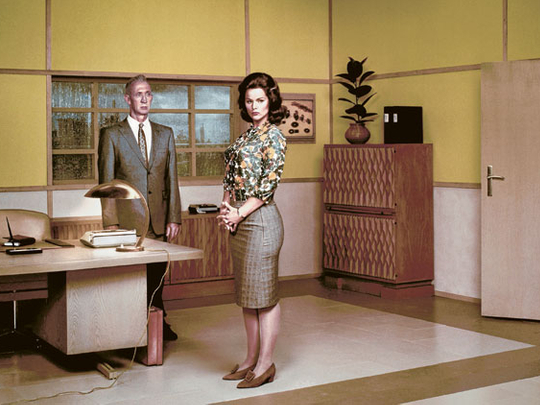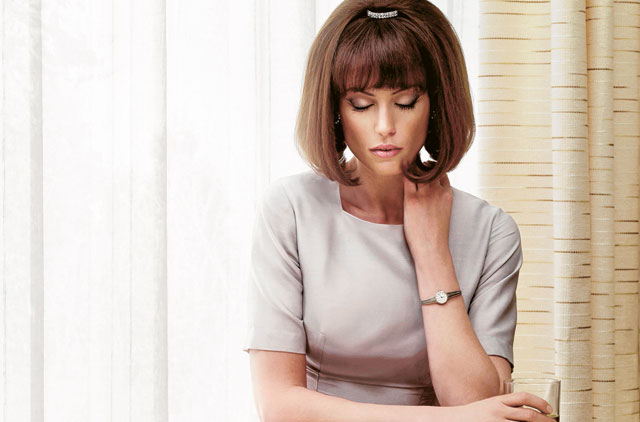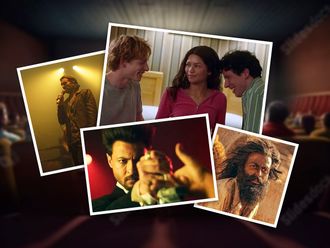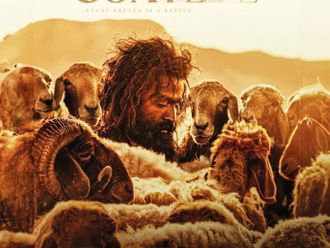
Erwin Olaf has explored themes ranging from metaphysical concepts to controversial issues such as gender and sex. The Dutch photographer's work has been called daring and provocative. But he believes that if he cannot create some tension between his images and the viewers, it is empty work.
Olaf's style is defined by elaborately staged photographs, with visual drama and emotional impact. He has won many awards, both for his independent art projects and his commercial assignments with top magazines and international brands. He made his mark on the international art scene in 1988, when he won the first prize in the Young European Photographer competition for his series, Chessmen. He has recently won the Lucie Award for his oeuvre and also the Johannes Vermeer Award 2011, the Dutch state prize for the arts.
Olaf's first solo exhibition in Dubai, titled High Tension, provides an overview of a career spanning three decades. It includes photographs from his iconic series, such as Rain, Grief and Hotel, and his work for international magazines. Weekend Review spoke to him about his work and evolution as an artist. Excerpts.
How do you find the themes for your work?
The idea could come from something I see or hear. But ultimately, my themes reflect my personality and my state of mind at that point of time. For instance, I was going through a low phase when I did Rain and Grief, which were about momentary actions and reactions. In Rain, I portrayed situations where a couple has broken up, and I tried to capture that split second before the woman realises what has been said. And Grief was about the start of the first tear of realisation. My recent series, Hotel, stems from my own experience of time spent in lonely hotel rooms during my travels around the world.
How does the idea develop into an entire series?
I work like a filmmaker to create a world of my fantasy. The abstract idea is developed into a narrative through the inputs of my set designer, my make-up artist, my costume designer and other crew. Every detail is planned. But the pictures will work only if I get the right look in the eyes of the model. So I have to create the right atmosphere in the studio and capture the right moment. Often, the spontaneous inputs by my models enhance the pictures.
How has your approach changed over the years?
I have realised that instead of creating many repetitive images, it is better to do a few iconic ones. And instead of telling the whole story, I now leave it to the viewer to fill in the details. I used to be an aggressive young man who wanted to conquer the world. Now I do not care about the opinion of others and enjoy expressing myself freely. I have made many short films, but now want to make a feature film. Also, for the first time, I am planning to move out of my studio and shoot on location in Berlin for my next series. I also want to experiment with telling many parallel stories in every photograph.
You have been accused of selling sensation because you use very good-looking models and choose provocative themes.
I used regular people in my early work but found that all the attention got focused on that aspect rather than the story I wanted to tell. Good-looking models are less of a distraction because people are used to seeing them as part of a narrative in advertisement campaigns and films. My early work was considered daring and provocative, but it only reflected the Punk Movement, the Squatters Movement and the sexual revolution happening in Amsterdam at that time. My themes still reflect contemporary life and the society I live in.
How do you feel exhibiting your works in this region?
The Western world seems boring when compared to the energy you can feel here. I am excited to be here, especially at this time, because my work is essentially about freedom. But I do not want to preach my idea of freedom. I just hope my work sparks discussion. I am keen to see how art here develops in the next decade.
What is your advice to young photographers here?
Be patient, it takes some years to become technically good. And always find time to do projects in which you can follow your heart. Be true to yourself, even if your ideas are not fashionable now. Do not imitate, but do not be afraid to take inspiration from others. You must learn from art history. I used to be obsessed with being completely different and it took me some time to learn that you must always stand on the shoulders of those who come before you.
High Tension will run at Carbon 12 gallery, Dubai, until November 10.












